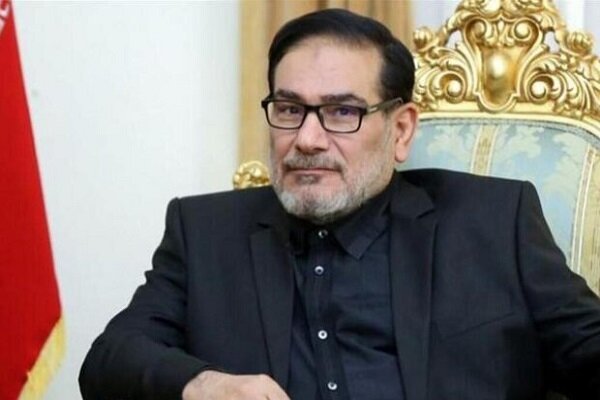

TEHRAN — The Secretary of the Security Council of the Russian Federation Nikolai Patrushev made a phone call with his Iranian counterpart, Admiral Ali Shamkhani, discussing Afghanistan, Syria, and Persian Gulf on Wednesday afternoon, as well as the news that Iran will soon join the Shanghai Cooperation Organization (SCO).
Patrushev and Shamkhani discussed continuous Russian-Iranian cooperation in the field of security.
Shamkhani also wrote on his Twitter account on Wednesday, “An hour ago, in a phone call with my friend and colleague Nikolai Patrushev, Secretary of the Russian National Security Council, we examined the developments in Afghanistan, Syria and the Persian Gulf.”
The secretary of the Supreme National Security Council stated, “Fortunately, the political obstacles to Iran’s membership in the Shanghai agreement have been removed and Iran’s membership will be finalized through technical formalities.”
The Shanghai Cooperation Organization is the continuation of Shanghai 5 Organization.
Shanghai 5 was a five-member organization founded in 1996 with primarily military and security objectives. Since then, the Shanghai Cooperation Organization has evolved, both in terms of increasing the number of members and in terms of the mechanism and scope of activities and goals.
According to available sources, in June 2002, during a meeting in St. Petersburg, Russia, the leaders of the organization’s member states signed the SCO charter, which provided detailed information on its objectives, principles, structure and operation, and thus the Shanghai Cooperation Organization was formally established under international law.
In 2005, three countries, Iran, India and Pakistan, joined the organization as observer members, and India and Pakistan became permanent members in 2017. Iran also applied for permanent membership in 2006 and 2015. Since accepting any country’s application requires the consent of all members of the Shanghai Cooperation Organization, Iran has so far been unable to join due to opposition from Tajikistan and Uzbekistan.
Without Iran’s active presence and its role as the link between East and West in China’s plan, it will be difficult to achieve the goals of reviving the Silk Road, and China is well aware of this. Because in both land and sea routes, Iran’s geopolitical position on the Silk Road is vital.
The plan, which includes two trade routes, the Silk Road Economic Belt and the 21st Century Maritime Silk Road, involves investing in the economic infrastructure of more than 65 countries.
The “economic belt”, which covers the land route of the Silk Road and is the ancient route of the Silk Road, connects China to Eastern and Western Europe through Central Asia and West Asia, and the countries of Kyrgyzstan, Kazakhstan, Uzbekistan, Iran, Turkey, Ukraine. It includes Poland, Belgium, France and finally Italy.
The 21st Century Maritime Silk Road also connects China to Southeast Asia, Africa, and even Europe, such as Greece and Italy, north of the Mediterranean Sea by sea.
Many countries that are in the path of China’s economic belt and are also members of the Shanghai Cooperation Organization are in the perspective of Iran’s trade relations. Experts believe that Central Asia is one of the potential regions for export development.
Also, the Islamic Republic of Iran has placed the perspective of the country’s economic position on the horizon of 1404 at the top of the countries of the Southwest Asia region and has divided this region into four subdivisions “Central Asia”, “Caucasus”, “Middle East” and neighboring countries.
The Central Asian region includes five countries: Tajikistan, Turkmenistan, Kyrgyzstan, Kazakhstan and Uzbekistan. This area covers about 34% of the total area of the landscape document and about 13% of the total population of the said document area.
A study of the level of development of the countries in this region shows that they provide good opportunities to advance Iran’s export goals. Although after the collapse of the Soviet Union and the emergence of new countries, a lot of efforts were made by Iran to enter the markets of these countries, but the desired result was not achieved.
According to the latest statistics of the Trade Development Organization, unfortunately, except for Turkmenistan, none of these countries are among the most important target markets for goods in 1396 and 1397. In 2017, Iran’s exports to Turkmenistan reached $418 million and in 1397, it decreased by about 4% to $400 million.
Meanwhile, Iran can expand its exports to these countries in various fields, including energy (including oil, gas and electricity). Iran’s role in economic relations, the geopolitical situation of the region, the transportation route of Central Asia out of the impasse, facilities and infrastructure such as Sarakhs-Tajan-Mashhad-Bandar Abbas and the ports of Chabahar and Bandar Abbas, can be very effective.
Central Asian countries do not have access to open waters. Therefore, in the economic plan of one Belt-One Road, China will inevitably be one of the access routes of these countries to the open waters of Iran. Therefore, Iran can provide better transportation, better and more access to the Persian Gulf by strengthening and developing communication infrastructure. In other words, Iran is their connection point to open waters.
SA/PA
 RSS Feed
RSS Feed















 August 12th, 2021
August 12th, 2021  Awake Goy
Awake Goy  Posted in
Posted in  Tags:
Tags: 













